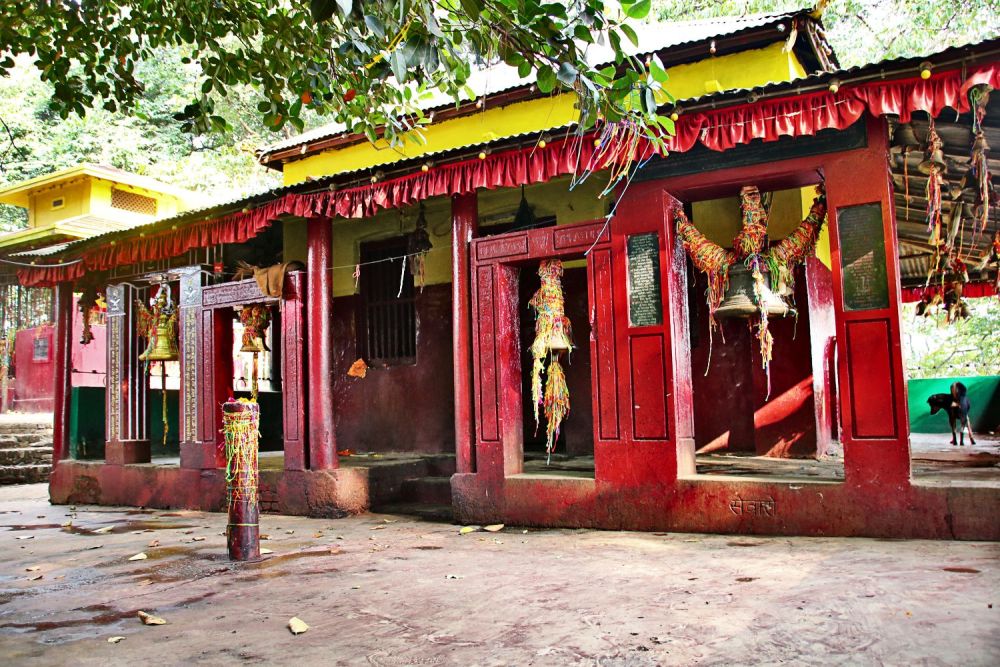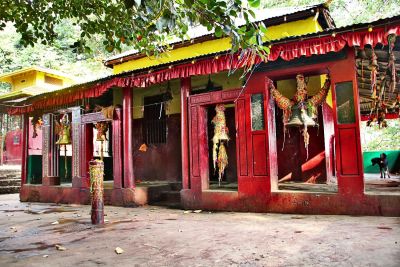

Budha Subba Temple, nestled in the city of Dharan in Nepal, is a cherished pilgrimage site with cultural and historical significance. Visiting the temple is a serene activity where devotees and tourists alike can offer their prayers and witness the unique traditions of the local people. The temple is reputedly named after a Limbu King, Budha Subba, and is characterized by its bamboo grove and the absence of a deity statue. Pilgrims often tie bamboo shoots in the temple premises with the hope that their wishes will be granted. The temple visit involves observing the beautiful murals and carvings that adorn the temple walls, which illustrate the stories of deities and various significant figures in local mythology. This quiet and contemplative atmosphere makes it a perfect place for meditation and self-reflection.
The Boka Jatra, or 'Goat Festival,' is an annual event that takes place at the Budha Subba Temple. This festival is a fascinating cultural affair that involves the sacrifice of goats to the deity as a form of worship and is believed to bring prosperity and good luck. During the festival, the atmosphere around the temple is electric with traditional music, dancing, and the gathering of the local community. Visitors get the opportunity to immerse themselves in the vibrant local culture and partake in the communal festivities. The Boka Jatra is not only a religious occasion but also a significant social event where families and friends come together to celebrate their heritage and make merry.
Archery is deeply embedded in the culture of the indigenous people of Dharan, especially the Limbus, who hold archery competitions regularly near the Budha Subba Temple. These competitions are a testament to skill and precision and are a source of great pride for the local community. Observing an archery competition allows visitors to experience another aspect of the culture associated with the temple. The archers, dressed in their traditional attire, aim at targets with remarkable accuracy, and the crowd's cheer and excitement add to the vibrant atmosphere. This activity offers a unique opportunity to learn about the traditions and skills that have been passed down through generations.
The Dashain Festival, which falls in September-October, is the longest and most significant festival in Nepal. The Budha Subba Temple becomes a focal point for thousands of pilgrims during this time. The devotees offer prayers, animal sacrifices, and seek blessings for prosperity and good health. The temple and its surroundings are adorned with colorful decorations and resonates with the sound of bells, conch shells, and chants. Visitors can observe or participate in the array of rituals performed and experience the rich tapestry of religious practices that define the Nepali Hindu tradition. The Dashain pilgrimage also includes flying kites, playing card games, and indulging in local delicacies sold by vendors around the temple.
One of the distinctive features of Budha Subba Temple is its lush bamboo garden. This peaceful haven is believed to fulfill the wishes of those who visit. Tourists can stroll through the garden, which provides a tranquil escape from the bustle of the city. The sound of the wind rustling through the bamboo leaves is meditative. Local lore suggests that the bamboos here never produce seeds because they are sacred. The garden also presents excellent opportunities for photography or simply as a restful place for contemplation and relaxation amidst nature. Visitors occasionally tie coins to the bamboo leaves as part of a local wish-making tradition, adding to the mystical ambiance of this serene garden.
The area surrounding Budha Subba Temple is a habitat for various bird species due to its peaceful environment and the presence of the dense bamboo grove. Bird watching enthusiasts can spend time spotting different varieties of local and migratory birds, especially during the early morning hours when the avian activities are at their peak. The chirping and singing of the birds provide a natural soundtrack to a morning well spent amidst the greenery. It's not only a wonderful way to learn more about Nepal's birdlife but also grants visitors a chance to appreciate the biodiversity of the region.
A visit to Budha Subba Temple is incomplete without savoring the local delicacies offered by the vendors around the temple complex. With a diverse population, Dharan offers a gastronomic mix of traditional cuisines, including Newari, Limbu, Rai, and more. Enjoy momos (dumplings), sel roti (traditional homemade rice bread), and other local specialties. Chat with the friendly locals, and learn about the food's significance in their daily life and festivities. This culinary journey will not only tantalize your taste buds but also provide insight into the region's culture through its flavors and cooking techniques.
During Tihar, the festival of lights which generally falls in October or November, Budha Subba Temple lights up with a mystical glow. The temple is decorated with oil lamps, candles, and colorful lights, creating a spectacular sight that draws visitors to participate in the celebrations. Devotees visit the temple to worship and offer prayers to Laxmi, the goddess of wealth and prosperity. The harmonious sounds of bhajans (devotional songs) and dances add to the festive spirit, with the local community coming together in joyful celebration. Engaging in Tihar celebrations at the temple allows visitors to be a part of the traditions that light up the night sky and symbolize the victory of light over darkness.
The serene environment of the Budha Subba Temple and its surrounding nature offer the perfect setting for meditation and yoga practices. Visitors can attend guided sessions or practice individually, connecting with the peaceful ambiance. Enlighten your senses, calm your mind, and rejuvenate your soul in the soothing presence of sacred woodlands and spiritual vibrations. This activity not only promotes physical well-being but also provides spiritual enrichment, attracting both locals and tourists looking for a retreat to balance their inner self-replenishing both the body and the spirit in the sanctity of this revered site.
For history buffs and culture enthusiasts, a visit to the Budha Subba Temple can be an enlightening exploration of the local traditions and narratives. Guided by a knowledgeable local, visitors can delve into the stories, myths, and legends associated with the temple. Learn about the origin of the temple's name, its significance in the Kiranti religion (practiced by many indigenous ethnic groups in eastern Nepal), and how it has evolved over time. This historical tour is both informative and captivating, providing a deeper understanding of the temple's role in the local community and its rich tapestry of cultural heritage that continues to be celebrated and revered to this day.
